22 Driveway Ideas: Styles and Shapes Suitable for Every Home
Pave the way to curb appeal with these driveway design ideas


What do you want people to think when they pull up to your home? Picking a new driveway is harder than it looks. In addition to taking your property's dimensions and aesthetics into consideration, you also have to choose the best materials for your terrain and climate. Let's not forget your budget! Driveway types can vary considerably in cost. This list of driveway ideas is the perfect place to start!
Driveway Shape Ideas
Before getting into all of the different materials that you can build a driveway from, let's focus on how a driveway is going to fit into your property. Depending on the size and shape of your lot, you may choose either a basic or unconventional driveway. Here's a look at your options.
1. Straight Driveway
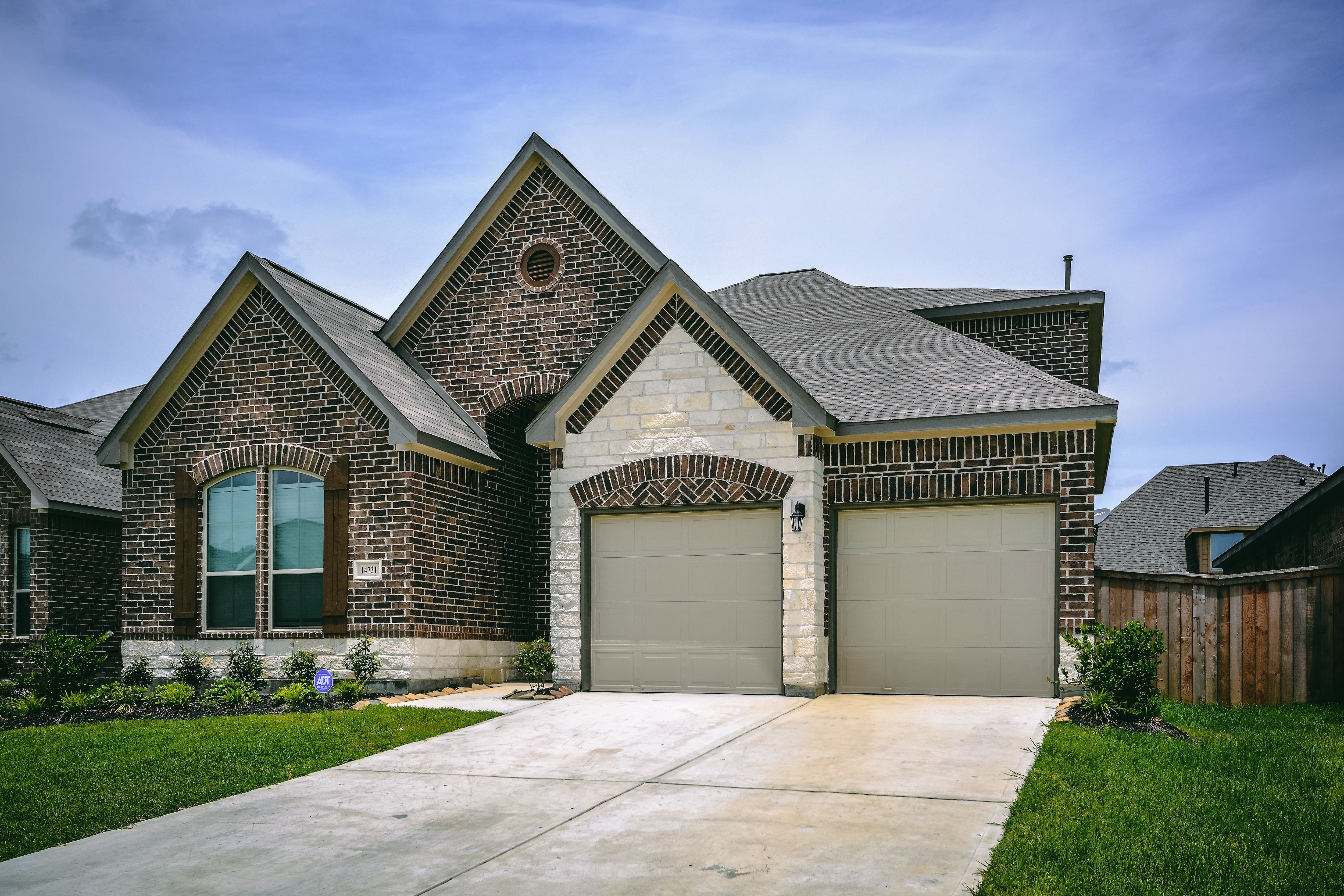
This is the type of driveway most of us pull into every night if we live in a residential neighborhood. Rectangular driveways offer the most direct route to a garage or carport. They are ideal when you have ample street parking available for guests or delivery vans. While they are utilitarian, they can leave enough room for extra cars or guest parking. In many cases, a straight driveway is the only option your zoning laws or HOA will allow. The only downside to straight driveways is that life can feel like you're playing a game of Tetris with cars if someone is blocking another car from backing out.
2. L-Shaped Driveway
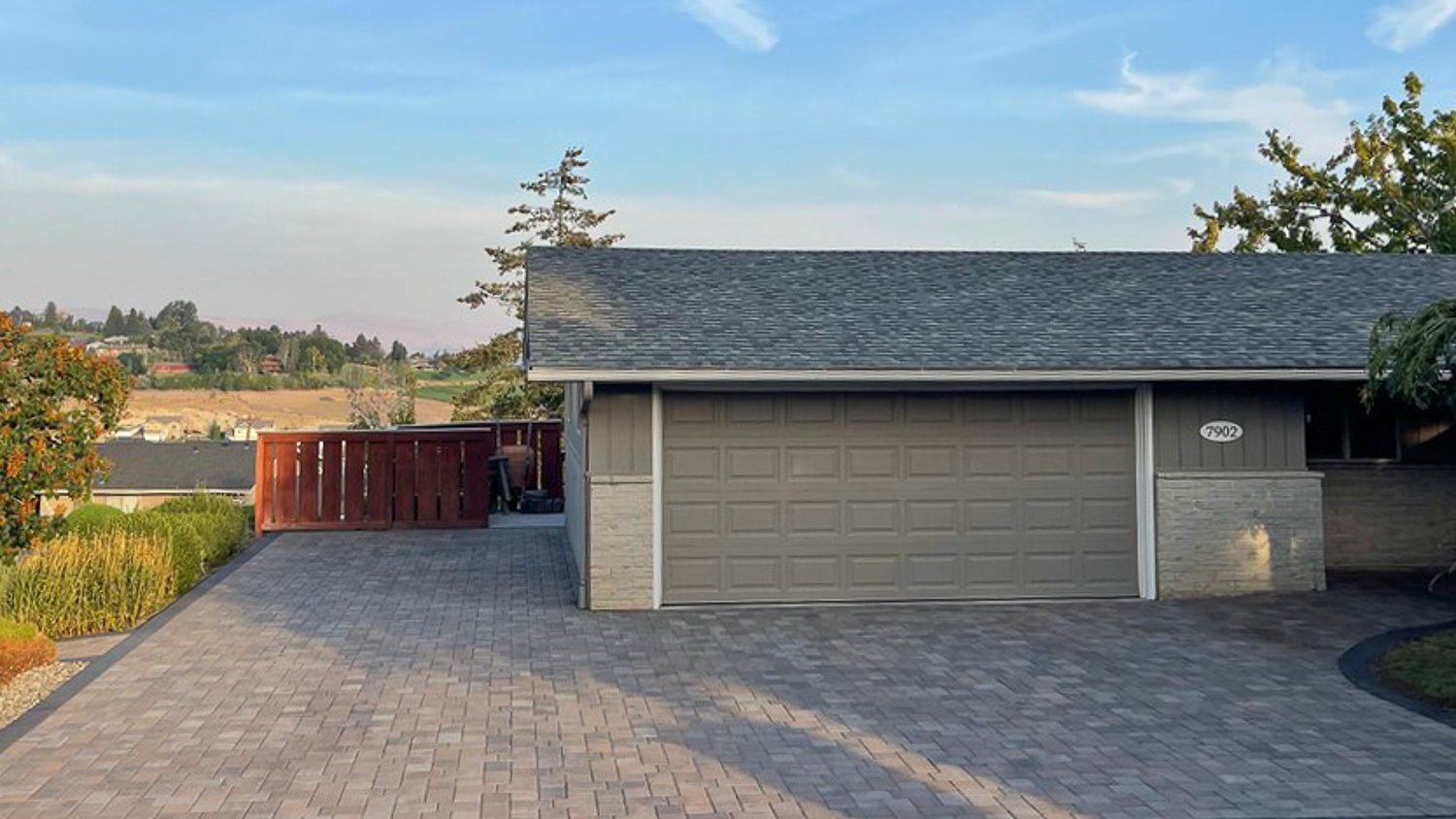
The L-shaped driveway adds a little bit of side room to a driveway. Consider this option if you're stumped about how to fit a boat, camper, or extra vehicle on your driveway in a residential neighborhood with limited yard space. Some homeowners simply like that L-shaped driveways make it easy to park the trash bin or lawn mower away from the house. With most L-shaped driveways, the extra space is tucked away at the side of the garage to allow direct access to the backyard.
3. Circular Driveway

Also known as a roundabout or rounded driveway, a circular driveway creates a nice little traffic loop in front of your home that is ideal for guests and deliveries. It's a great pick if you host parties at your home because the circular driveway provides tons of parking without forcing people to make a long walk to your front door from the street. People driving up to your door also don't need to worry about backing out because they will simply loop around and reach the street in a forward driving position. You need a generous-sized front lawn in order to make a circular driveway. This is an ideal choice for a home positioned on a large lot that is off of a main road.
4. S-Shaped Driveway
.jpg?impolicy=leadImage)
The S-shaped driveway may be the driveway idea you're looking for if you have a mature, wooded lot that is set far back from the road. When designing an S-shaped driveway, you can allow the path to meander to avoid any majestic trees you don't want to cut.
5. Semicircle Driveway

Also known as a U-shaped driveway or horseshoe driveway, the semicircle driveway is a take on the roundabout driveway. This variation works well if you have a smaller front yard that is close to the street. Visitors can pull in and out by simply looping through in one direction instead of doing a three-point turn or backing out into a busy street. Semicircle driveways are often used as secondary driveways for homes, side garages, or detached garages when the front door is close to the road. While your main driveway may be a standard driveway that pulls up directly to your garage, a secondary semicircle driveway serves as an access point for the front door.
6. Y-Shaped Driveway

This driveway design creates two little side nooks positioned near the garage and your home's entryway to create a turnaround room. It's one to consider if you wouldn't have a lot of parking room or turnaround space if you went with a traditional straight driveway. People who live on main roads often like Y-shaped driveways because the design allows them to turn around their cars to exit instead of backing out into traffic.
7. Double Driveway
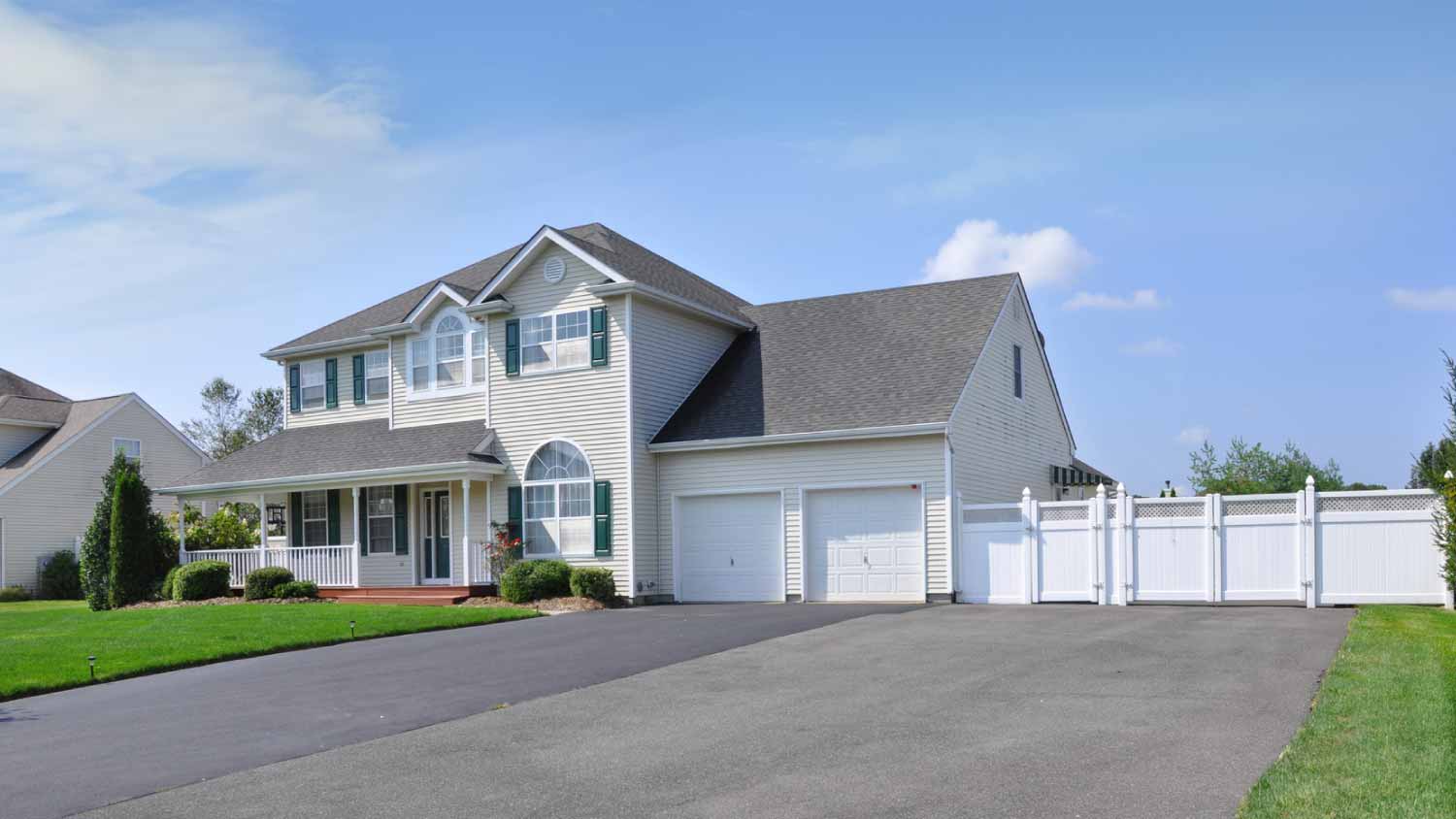
Some homeowners opt to double the width of their driveways to create a double driveway. The second half of this type of driveway is simply closed off with a fence because it does not lead into the garage like the primary driveway. Consider this option if you have a busy household with lots of drivers. It's also a great way to create parking if you live on a main road without much room. Some homeowners like the double driveway because it allows for a place for kids to play basketball or ride bikes.
Driveway Materials
From smoothed paved driveways to cobbled pathways that have been laid by hand, homeowners have so many driveway design ideas to choose from! However, choosing the right material is about more than simply creating your dream aesthetic. You also need to make sure that your driveway is made of a substance that's ideal for your terrain and climate. See if any of these driveway ideas spark some inspiration.
8. Paved Asphalt

There's a reason why a classic paved asphalt driveway is the most popular option in residential neighborhoods. With its sleek, polished look, the asphalt driveway makes a property look neat and finished. With the cost to pave a driveway with asphalt at just $7 to $13 per square foot, asphalt is a budget-friendly driveway option. It's also easy to install and quick to cure compared to a traditional concrete driveway. Asphalt also performs nicely against wear and tear from weather and vehicle traffic.
9. Asphalt Millings
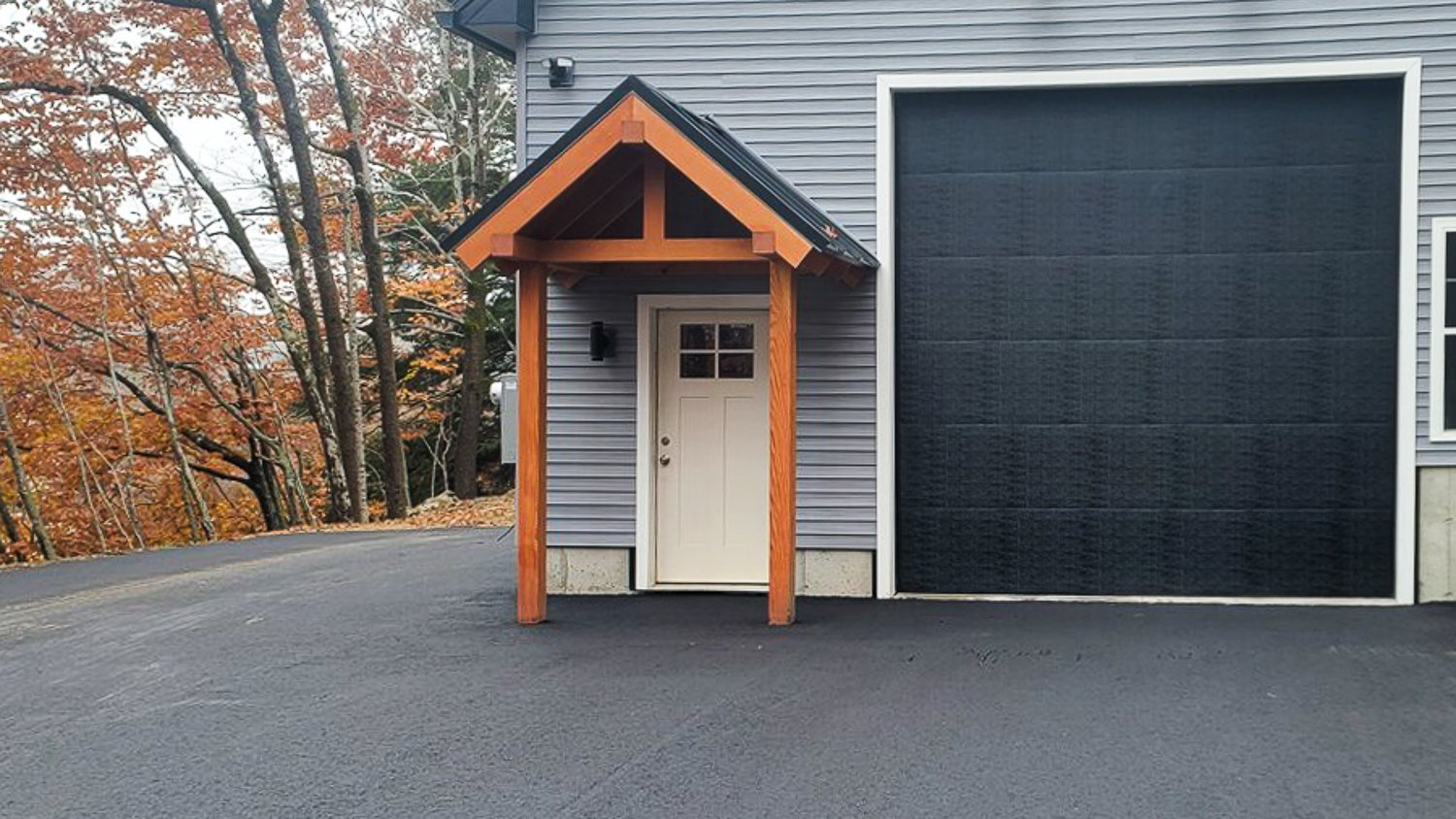
Did you know that you can actually save money and have an eco-friendly driveway by using asphalt millings? Made from recycled asphalt, this type of driveway looks nearly identical to true asphalt when installed. This type of driveway can often be installed for just $3 to $5 per square foot.
10. Brick
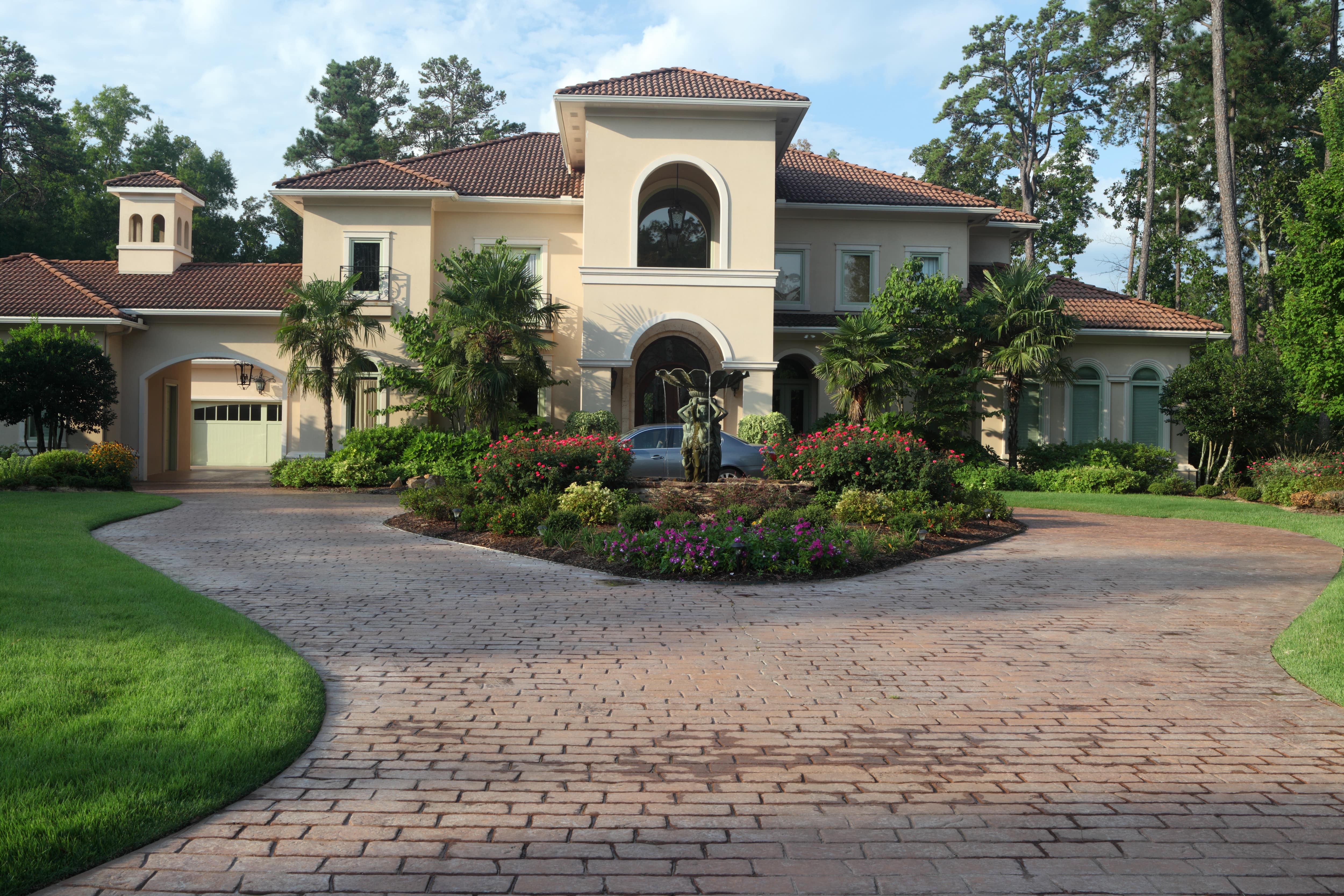
If you want an elegant, storybook driveway, brick is hard to beat. Used on roadways for eons, brick stands the test of time. It could even last 100 years at your home without fading if you remember to seal it regularly. Brick's skid-resistant and slip-resistant properties make it an excellent choice. At $10 to $30 per square foot, brick does represent the higher end of cost for driveway ideas.
11. Tar and Chip
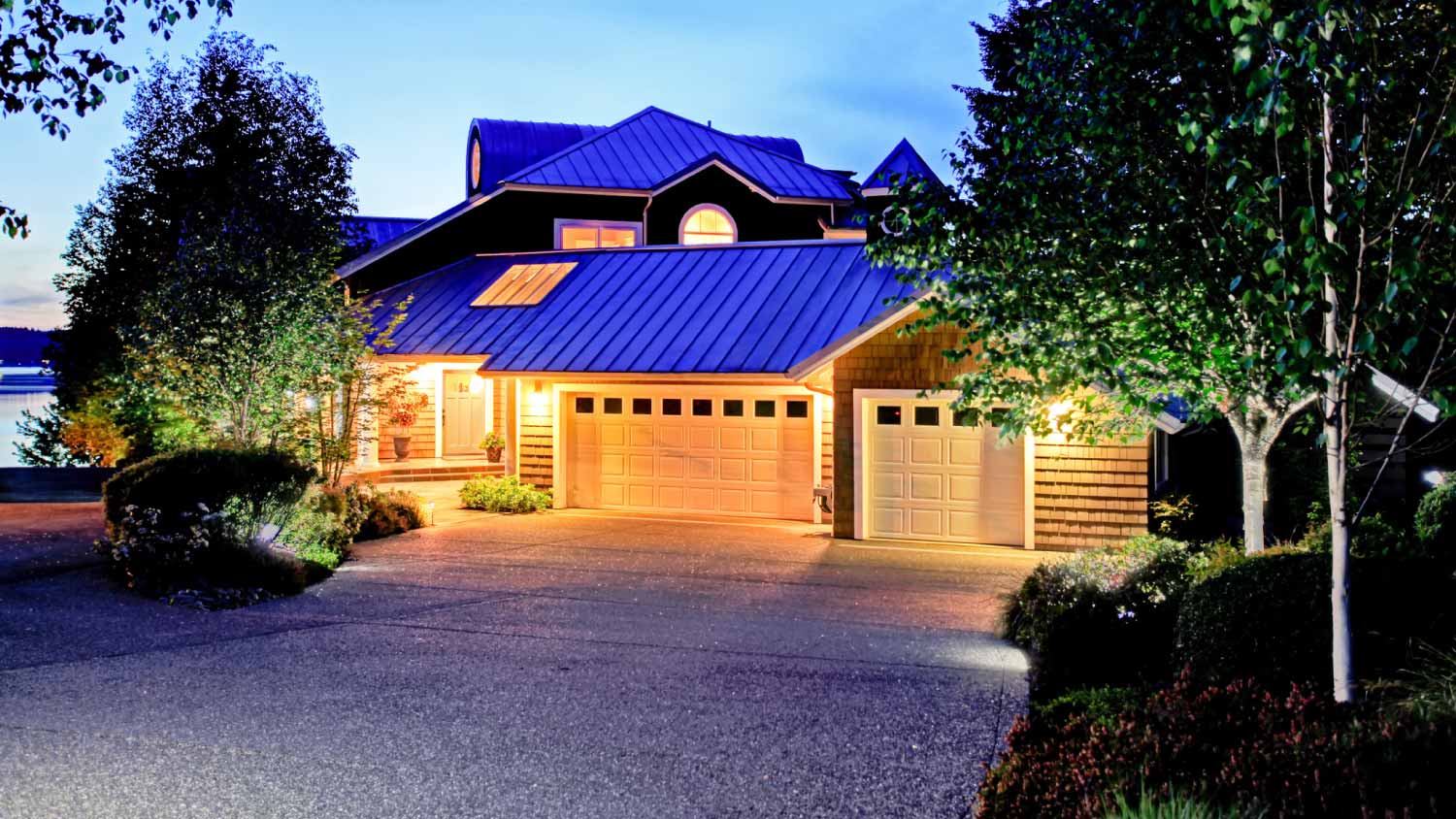
When you contact a driveway contractor about a tar and chip driveway, they may refer to this option as a "chip seal" driveway. Tar and chip driveways are made by combining hot liquid asphalt and stone. When cooled, this creates a textured driveway that offers good traction and durability. At around $3 per square foot, a tar and chip driveway can be a good cost-effective alternative to an asphalt driveway while achieving a similar aesthetic.
12. Ribbon
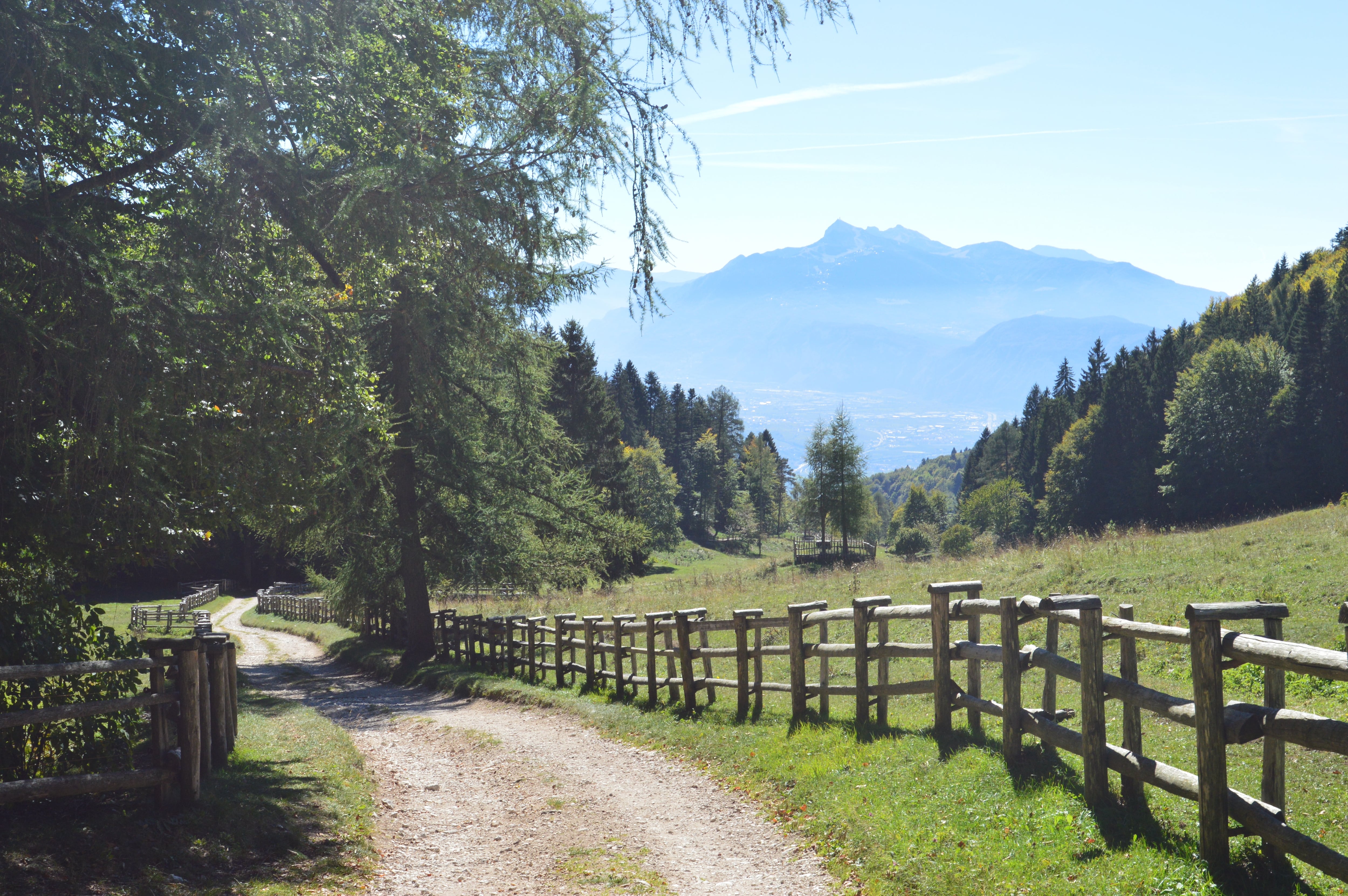
If you have a deep-set rural property, consider a ribbon driveway that offers a practical way to create entry without the cost of actually paving the whole route from the road to your room. This rugged option paves two vertical lines that provide traction for vehicles. However, you can cut costs while also maintaining a rural look by leaving the median between the lines unpaved. This driveway is called a "ribbon" driveway because the two parallel strips resemble ribbons. You'll generally add some gravel or stone to the middle portion to prevent grass growth or erosion. If you have a complex property with lots of trees or other obstacles, you'll like that ribbon driveways can be curved to meet the contours of your property.
13. Pavers
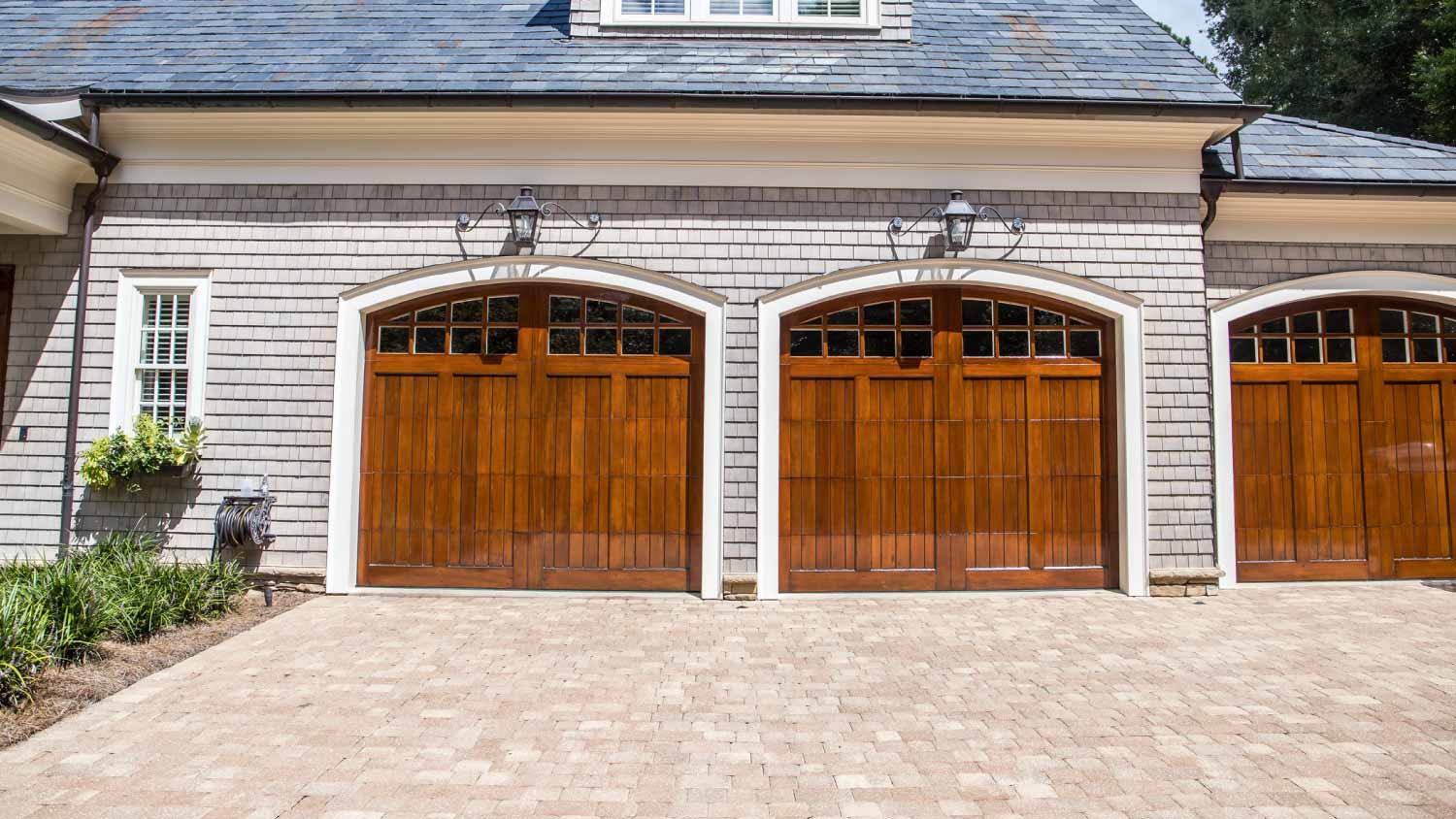
This is one of the best driveway ideas if curb appeal is the main priority. At $10 to $25 per square foot, paver driveways require a higher cost investment than many other driveway ideas. However, their beauty and ruggedness make them a great investment if you want a driveway that lasts for decades without cracks or chips. In addition to being highly practical, pavers are also ornamental. Due to the fact that pavers can be made from natural stone, brick, or concrete. They are available in a number of colors and shapes that allow you to create beautiful patterns and mosaics on your driveway. Pavers also let you add in some luxury elements. For example, heated driveways cost around $13,000 with pavers.
14. Permeable Pavers

One issue you might run into with traditional pavers is that they can create runoff issues if your property has drainage problems. If you don't want to pay the average cost of $2,119 to $7,114 to add a drainage system to your property, consider going with permeable pavers instead. Permeable pavers are made from clay or brick that's buffered by crush aggregate materials made of marble, quartz, or granite. These aggregate "joints" create spaces where water can filter through instead of sitting on top of your driveway. Like traditional pavers, permeable pavers come in dozens of colors and styles. This driveway idea also gets points for being an eco-friendly option.
15. Concrete Slab
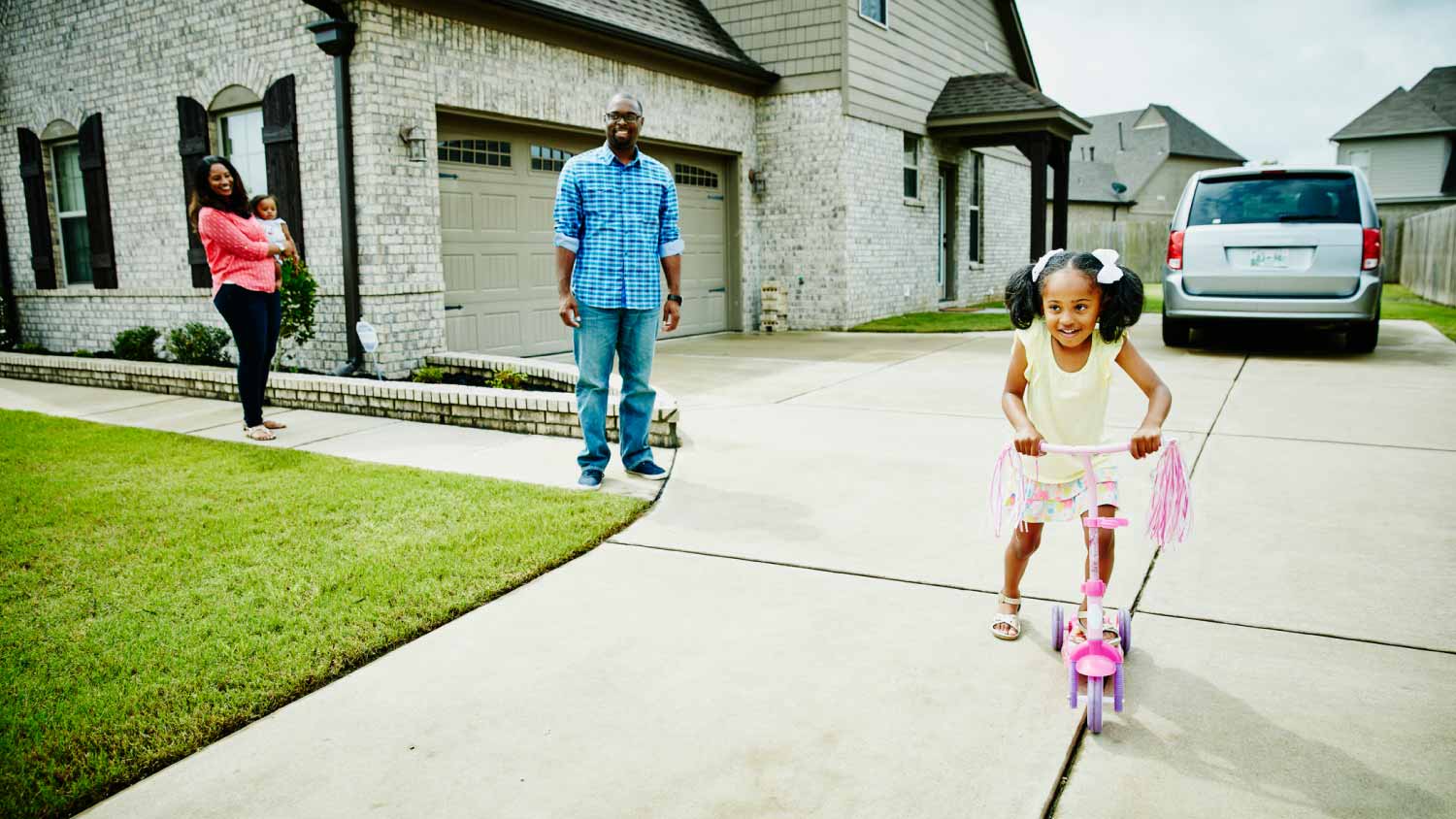
If you're looking for heavy-duty driveway ideas because you park a heavy truck or equipment on your driveway, you may need to consider skipping traditional options in favor of a concrete slab. A concrete driveway is made from a mix of cement, sand, gravel, and water that all get cured together. Concrete offers both height and weight resistance. You can easily get 50 years out of a concrete driveway with minimal maintenance. At $3 to $10 per square foot, a concrete driveway can be a great value for the longevity and durability you're getting. Concrete is also generally easier to repair than concrete.
16. Stamped Concrete

Want the look of a paver or stone driveway without the cost? A stamped concrete driveway recreates the look of a custom driveway for much less. Stamped concrete is just poured concrete that has been embellished with different patterns or colors. During the process of creating a stamped concrete driveway, contractors use a plastic material called polyurethane to create 1-inch-thick blocks that are usually 2 feet by 2 feet. In general, a stamped concrete driveway costs between $8 and $12 per square foot.
17. Exposed Aggregate Concrete
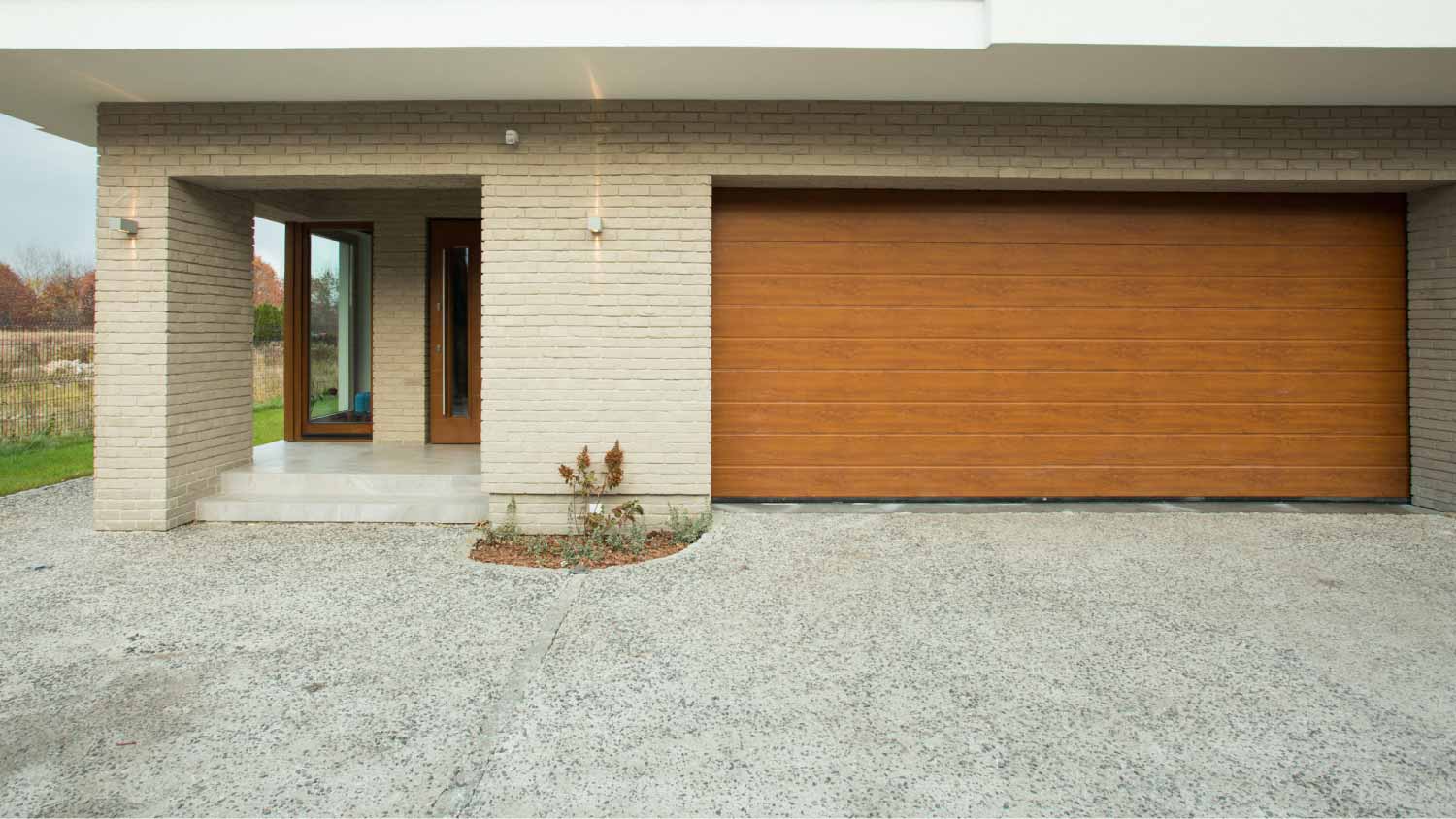
Exposed aggregate concrete is a driveway material that can contain stones, pebbles, sand, recycled glass, or shells on the surface. Homeowners like that they can choose from a number of different textures and colors when designing a custom driveway. If you're considering this option, you may hear your driveway contractor refer to it as a "pebble finish" driveway.
If you live in an area with heavy snow and ice, exposed aggregate concrete will provide great traction and slip-resistant qualities during cold weather. This long-lasting option can typically last up to 30 years. Many homeowners also like the natural beauty and interest this option brings compared to a standard asphalt driveway.
18. Cobblestone

Go ahead and make your home feel like a castle with a cobblestone driveway. Ideal for historic homes or new builds with old-world charm, cobblestone driveways are highly durable. Unlike asphalt or concrete driveways that soak in oil and chemical stains, cobblestones are naturally resistant to staining because of their pH-proof quality. At $18 to $50 per square foot, going with cobblestone could cost anywhere from $8,600 to $24,800 when installed for an average-sized driveway.
19. Gravel
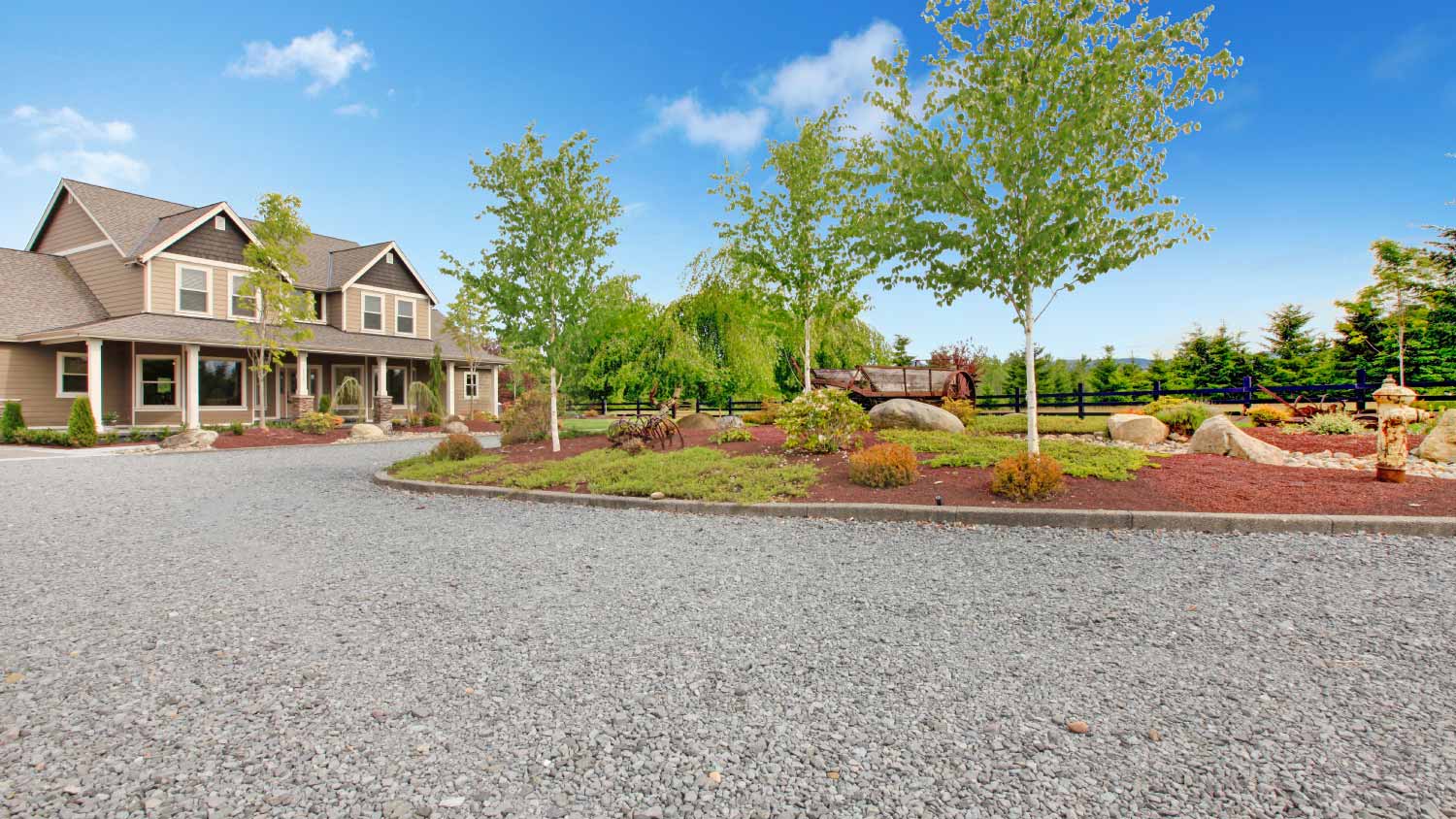
A loose gravel driveway is a cost-effective option that requires minimal maintenance to stay beautiful for decades. The cost to install a gravel driveway at your home ranges from $1.25 to $4 per square foot. Gravel is made from loose rock fragments that come in a variety of colors and "sheens." If you live in a soggy spot, gravel should be at the top of your list for driveway designs because of its excellent drainage. Homeowners also like that they can simply replenish gravel when it's time to repair a driveway instead of dealing with the process of repaving and resealing. Just be aware that installing a gravel driveway on a hilly property is a little tougher. While possible, you'll need to do special grading to stop gravel from sliding down the slope of your yard, which can add between $1,000 and $3,000 to your project budget. If your property is steep, consider asphalt or concrete instead.
Driveway Patterns
If you're laying down pavers of some kind instead of paving your driveway, you'll need to decide how you want the design laid out. In addition to determining the aesthetic of your driveway, your stone pattern can also influence how sturdy it can be. When talking with a driveway paving company near you, be sure to ask to see samples of different patterns.
20. Herringbone

The herringbone design uses an interlocking pattern that adds to a driveway's stability. In addition to being visually beautiful, this option can prevent your driveway from shifting. Consider this for high-traffic driveways. When designing a herringbone driveway, you can opt for a 45-degree or 90-degree design. With the 45-degree design, you'll have a more diagonal look. While the 90-degree design is less striking, it actually locks the pavers tighter for enhanced durability.
21. Basketweave
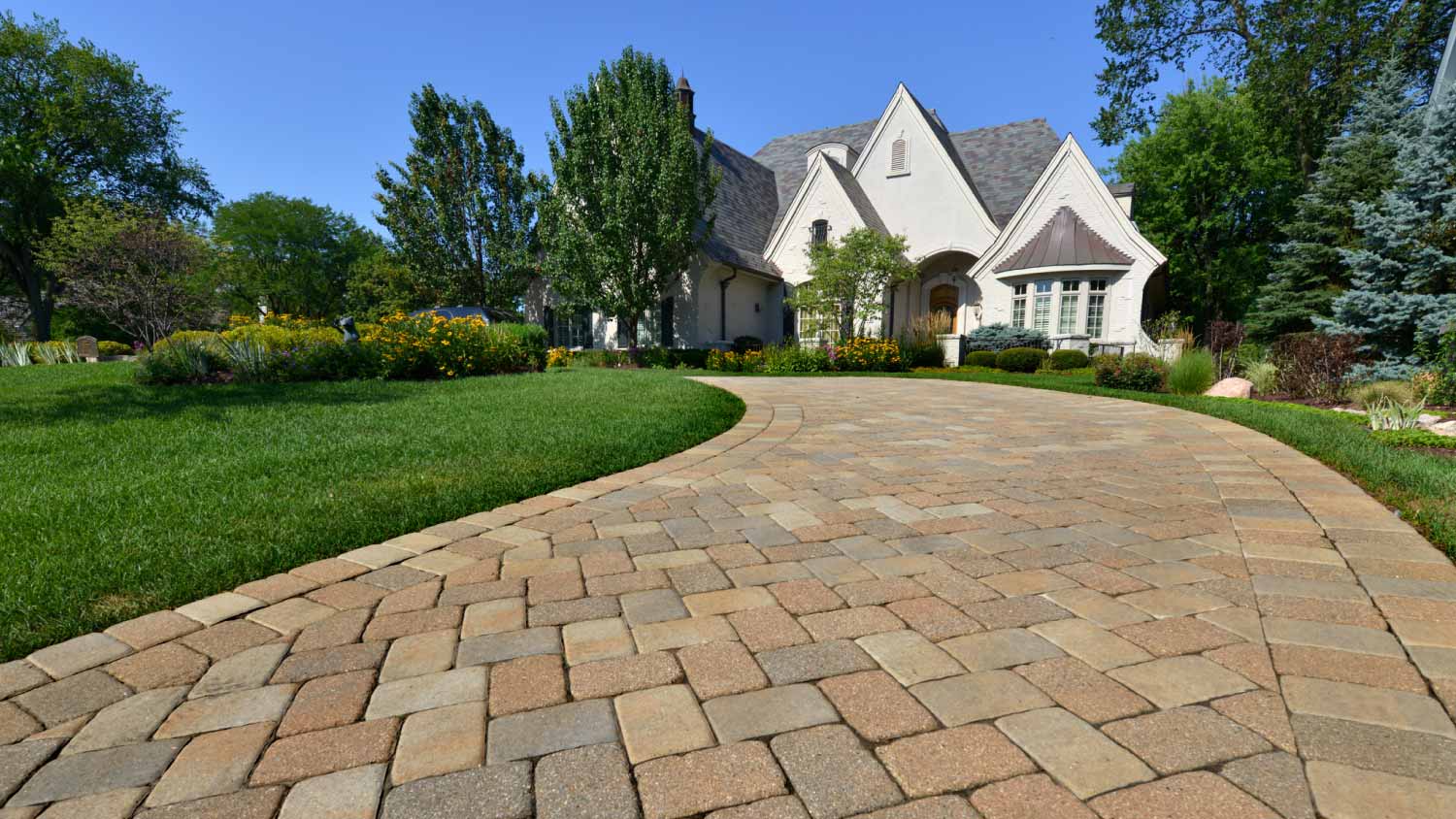
This neat, timeless look lays down pairs of bricks at right angles to create a classic square grid. A basketweave driveway goes with any style of home. Basketweave driveways can also be less expensive to install because installation is less complex. Additionally, the layout creates the illusion of more space to make your driveway look larger than it is.
22. Running Bond
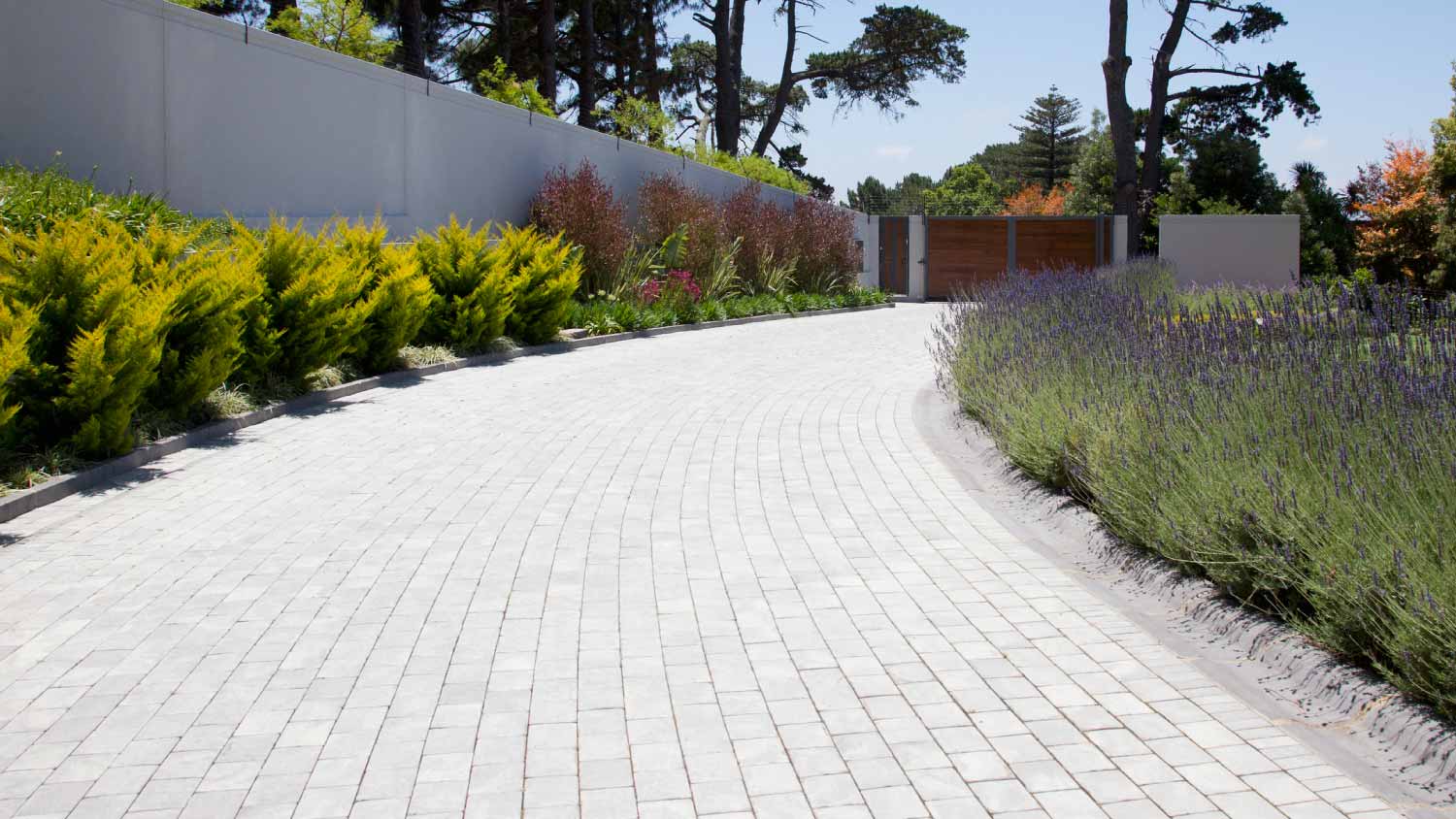
The running bond stone pattern lays bricks or stones out with their longer sides facing outward. Every row is offset from the one below and above it by about half a paver. This is a simple, repetitive design that is sturdy and easy to install. Visually, the benefit of the running bond driveway pattern is that it transitions easily to an accompanying walkway.
Frequently Asked Questions
Overall, a paver driveway is considered the easiest to maintain because homeowners are able to do driveway repair one piece at a time without impacting the rest of the driveway. Unlike paved options, paver driveways contain individual stones that aren't physically connected. By comparison, you may need to reseal or redo a full asphalt driveway if just one portion sustains a significant crack.
Overall, paver driveways are considered the most valuable. Brick and cobblestone driveways also add value by bringing a high-end aesthetic. However, the most important thing when creating curb appeal is simply having a well-maintained driveway made from a material that is appropriate for your local climate and terrain.
Most asphalt driveways can last for 15 to 25 years before they need to be replaced. While this is a decent amount of longevity, asphalt driveways actually have one of the shortest lifespans among driveway styles. If you're looking for a longer-lasting driveway, other standard lifespans are 20 to 50 years for concrete, 30 to 100 years for pavers, 50 to 100 years for brick, and 30 to 50 years for aggregate.
In general, gravel driveways are meant to last for 10 to 20 years. Proper grading prior to installing your gravel driveway can help to lengthen the lifespan by preventing erosion. It's also important to add landscaping fabric before adding gravel. Finally, homeowners should make sure they're routinely adding fresh gravel when they notice holes. Due to the fact that it's easily destroyed by regular plowing, gravel isn't the best driveway material for cold weather.
A gravel driveway can be driven on instantly. While pavers don't technically need to cure, you'll typically be told by a contractor to wait at least 24 hours before driving on any stones or bricks after they've been set. While an asphalt driveway does take up to 72 hours to cure, this is far shorter than the week required for concrete driveways.




- Best Driveway Material for Cold Weather
- Driveway Width: Ultimate Guide to New or Replacement Driveway
- What Causes Driveways to Crack?
- When is the Best Time to Seal a Driveway?
- Driveway Repair Options: When to Patch, Resurface, or Replace a Damaged Driveway
- 10 Types of Driveways: Pros, Cons, and Costs
- 10 Driveway Terms You Should Know
- 11 Driveway Extension Ideas for Additional Paved Space
- How Often Should You Seal Your Driveway?
- 8 Tips for Hiring a Dependable Driveway Company















